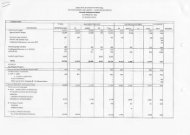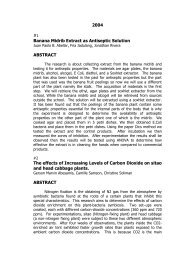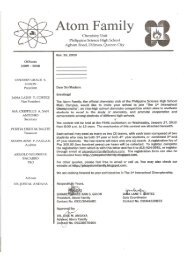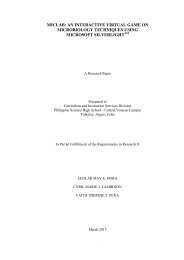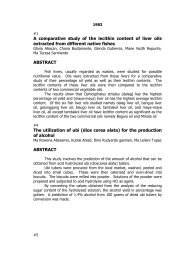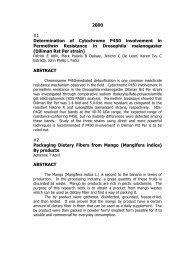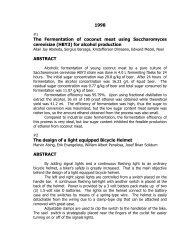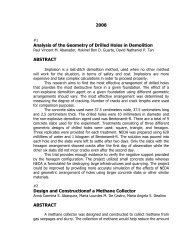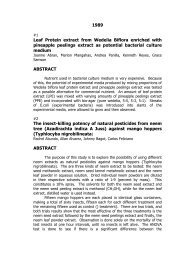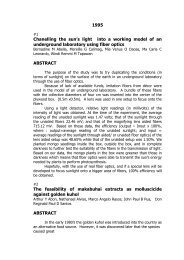A comparative study of paper produced from zea mays - Philippine ...
A comparative study of paper produced from zea mays - Philippine ...
A comparative study of paper produced from zea mays - Philippine ...
Create successful ePaper yourself
Turn your PDF publications into a flip-book with our unique Google optimized e-Paper software.
#21<br />
A <strong>comparative</strong> <strong>study</strong> on the efficiency <strong>of</strong> carabo dung and<br />
ipil-ipil leaves as substitute for charcoal<br />
Sheryl Catura, Lorna de Leon, Dolores Dimapilis<br />
ABSTRACT<br />
This <strong>study</strong> tested the efficiency <strong>of</strong> two materials as charcoal<br />
substitutes. Ipil-ipil leaves and carabao dung were decayed on separate pits<br />
for 45 days. Then mixed into proportions <strong>of</strong> : 100% dung, 100% ipil-ipil<br />
leaves and 50% dung plus 50 % ipil-ipil leaves for molding in briquettes. The<br />
briquettes were allowed to dry for 1 day. Efficiency was tested by heating<br />
150 ml <strong>of</strong> water.<br />
Temperature <strong>of</strong> the water was taken at 2 min, intervals, and the<br />
maximum temperature <strong>of</strong> water was recorded when the charcoal substitute<br />
was used up. Each treatment received 6 trials, using 3 briquettes per trial.<br />
Ordinary charcoal was subjected to the same test, and the results were used<br />
as a basis <strong>of</strong> comparison. The results <strong>of</strong> the test and by using the Analysis <strong>of</strong><br />
variance (ANOVA) test showed that dung-ipil mixture was the most efficient<br />
charcoal substitute.<br />
#22<br />
The Production <strong>of</strong> glue and <strong>paper</strong> <strong>from</strong> scrap hides<br />
Neriza Y Chin, Evelyn Angelita P Curioso, Rowena B Gobenciong, Maria Alyn<br />
Ines J Newman, Margaret S Yenko<br />
ABSTRACT<br />
The research work aimed to determine the possibility <strong>of</strong> producing glue<br />
and <strong>paper</strong> <strong>from</strong> scrap hides.<br />
For the production <strong>of</strong> glue, alum was added to the extract <strong>produced</strong><br />
<strong>from</strong> the boiling <strong>of</strong> scrap hides. As for the production <strong>of</strong> <strong>paper</strong>, the pulp was<br />
not subjected to quantitative test. It was immediately processed into <strong>paper</strong><br />
by hand <strong>paper</strong>making.<br />
The glue <strong>produced</strong> developed into a heterogeneous mixture <strong>of</strong> a<br />
crystalline substance and the liquid which did not exhibit sufficient adhesive<br />
properties on wood or <strong>paper</strong>. On the other hand, the <strong>paper</strong> <strong>produced</strong><br />
exhibited a tearing strength (58.0g) within the range <strong>of</strong> <strong>Philippine</strong> standards<br />
for wrapping <strong>paper</strong> but was substandard in terms <strong>of</strong> thickness (35.71 mills)<br />
and weight (419.0 kg/15mm). It did not pass any <strong>of</strong> the standards for writing<br />
<strong>paper</strong>.



